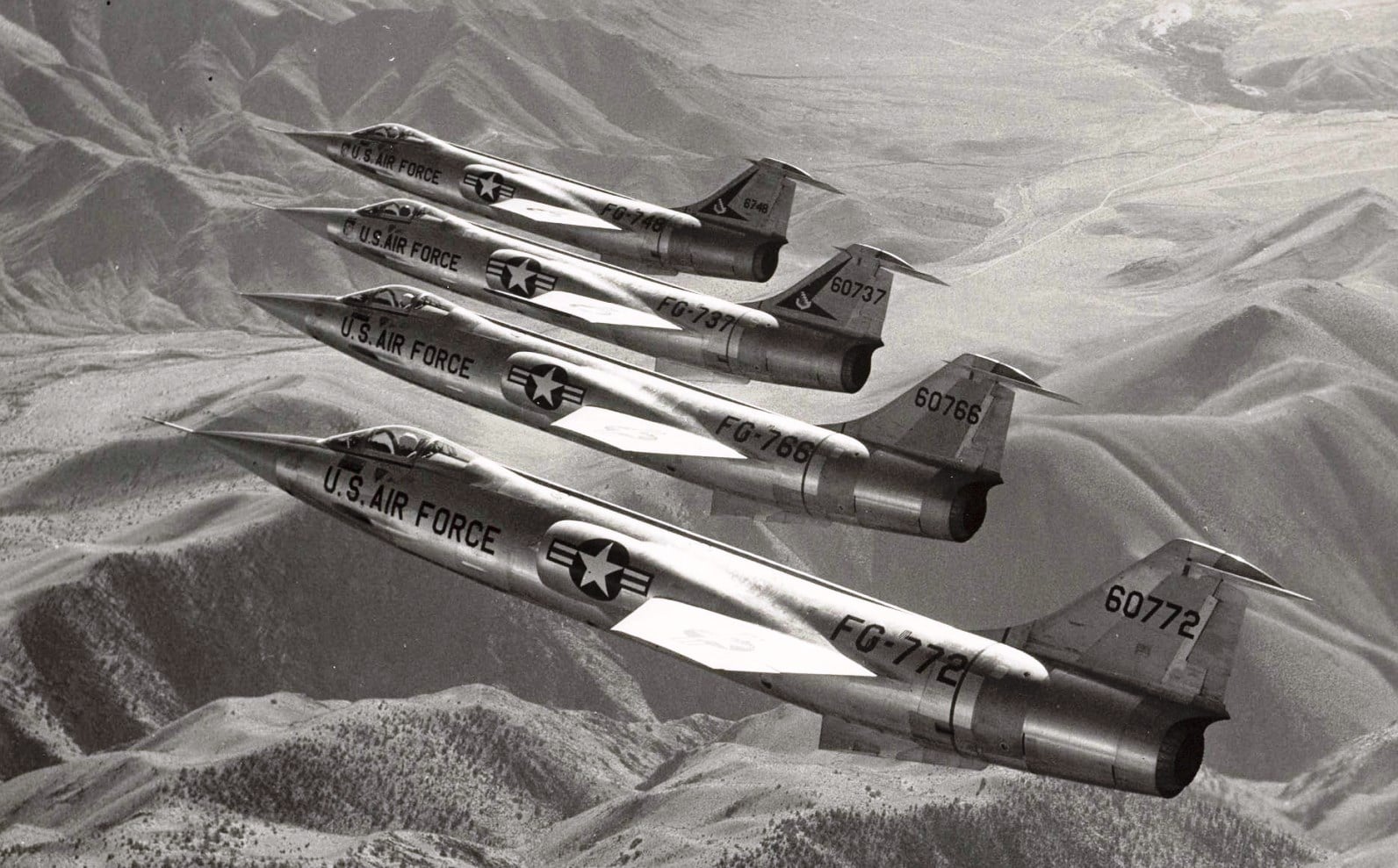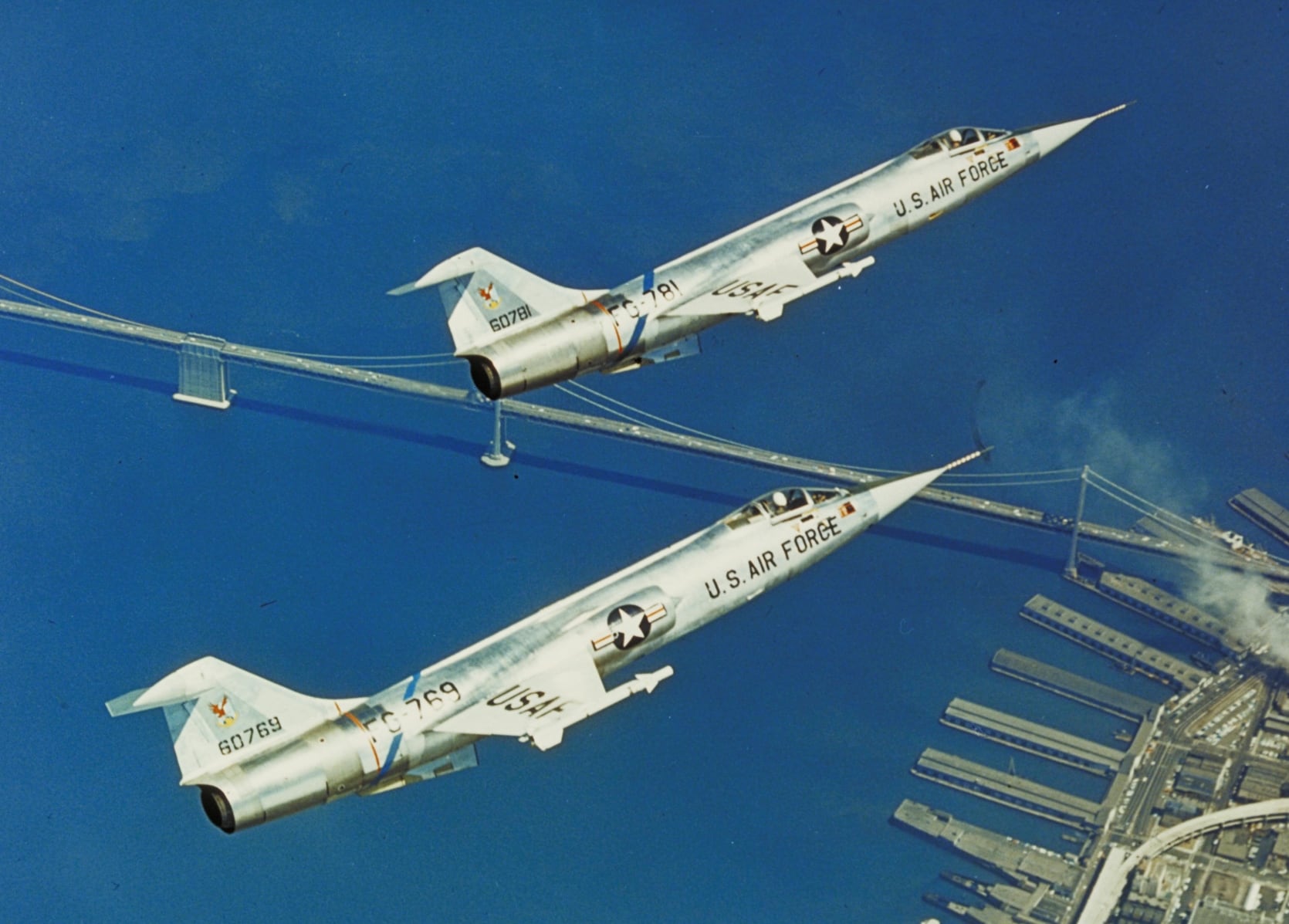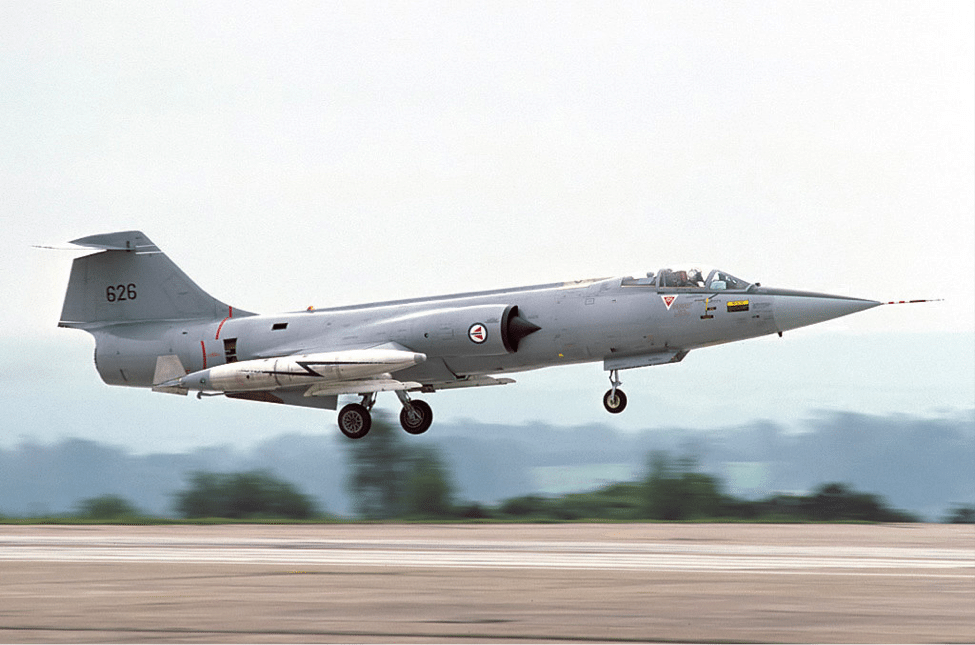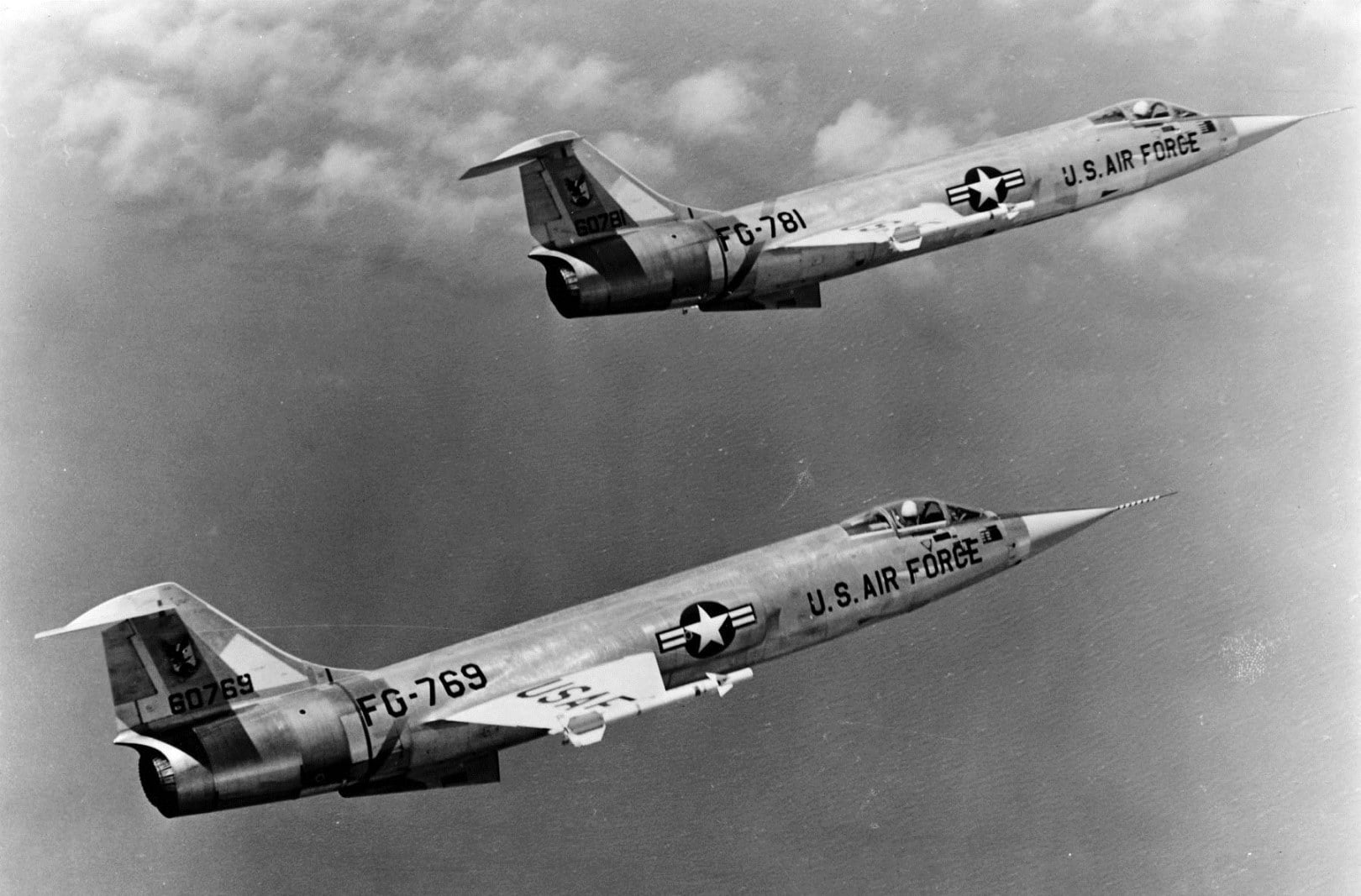Homecoming and Reassignment
The 435th Tactical Fighter Squadron made the last F-104C deployment to South Vietnam from June of 1966 to July of 1967. During this deployment the 435th flew 2,272 combat sorties and lost nine more aircraft (to all causes). The 435th transitioned to the F-4 Phantom II after their Starfighter deployment. The F-104 Starfighters did not score a single air-to-air kill in Vietnam. Once the F-104Cs returned from Vietnam they too were transferred to ANG units.

A Great Jet But Not the Right Jet
After evaluating the F-104 and its capabilities against the missions it needed the aircraft to execute, the US Air Force decided that the Starfighter was not capable of fulfilling either the interceptor or tactical fighter-bomber roles because the 104 lacked both payload and endurance.

Shortened Career Wearing Stars and Bars
The US Air Force ended up buying just 296 F-104s (all models and variants). Based on the findings of their evaluation and the aircraft’s inherent design limitations, the F-104s were phased out of regular US Air Force service after 1968 but soldiered on with ANG units for a few more years. The Puerto Rico ANG gave up the last operational American F-104s left in captivity in 1975. But that didn’t mean that Starfighters wearing stars and bars disappeared from American skies.

Geflogen von der Luftwaffe
The West German Air Force flew a wing of TF-104Gs and F-104Gs tasked with training their pilots out of Luke Air Force Base in Arizona until 1983. Even though the aircraft were owned by West Germany (and some had been license-built by them as well), they wore American markings. When the Germans replaced their F-104Gs with F-4F Phantom IIs they operated an F-4F-equipped training wing out of Luke and their F-4Fs wore American markings too. Germans? Read on.

Designed to German Specifications
The West German Air Force was looking for a foreign-designed aircraft capable of carrying out multiple roles right about the same time that the US Air Force was pushing the aircraft out to ANG units and replacing it in front line service. Realizing that no practical modifications to the design would result in US Air Force procurement of the F-104, Lockheed heavily modified the F-104C to include the capability to perform all of the missions required by the West German Air Force and the F-104G was born.

World Jet for NATO
In a competition with several other seemingly more advanced aircraft, Germany chose the F-104G as their winner and the Starfighter had a new lease on life. Lockheed built a total of 738 F-104s. Eight other licensed manufacturers (including Canadair, Fiat, Fokker, and Mitsubishi) pushed the total number of F-104s built to 2,574 airframes in 14 distinct variants. In addition to the United States and West Germany, the F-104 was also operated by Belgium, Canada, Denmark, Greece, Italy, Japan, Jordan, The Netherlands, Norway, Pakistan, Spain, Taiwan, and Turkey.

Long-Serving Jet Finally Retires
When the F-16 Fighting Falcon became available as an export model many of the countries operating the F-104 began replacing them with the F-16. That by no means meant that the operational life of the F-104 was short. Nearly 47 years after the F-104 was first delivered to the United States Air Force, the Italian Air Force retired the planet’s last operational Starfighters on 31 October 2004.
Warbird Starfighters?
At any given time there are about ten privately owned and operational Starfighters based in the United States today. We recommend you take full advantage if presented with an opportunity to see (and hear) one in action. See for yourself.
[youtube id=”gOwIdAXlgPg” width=”800″ height=”454″ position=”left”]

[…] During the mid-1970s the German Luftwaffe was looking for a replacement for their license-built Lockheed F-104G Starfighter fighter bombers. Vought’s A-7 Corsair II was one aircraft in consideration to be that […]
a great airframe…….